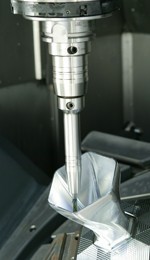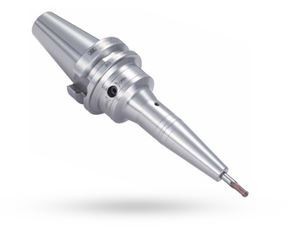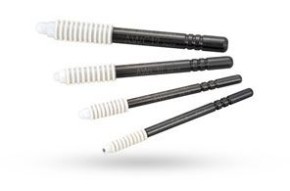6 Important Considerations When Using Long-Reach Tool Holders
The further the tool does its work from the spindle, the more room for error. Deep pockets and cavities usually signify that a part is nearing completion, making the smallest of errors almost impossible to recover from and very costly. Not to mention, extended tooling setups stress every component therein more than usual and can wear out equipment in a bottom-line-damaging way. Needless to say, long-reach cutting is a high stakes game.
Lucky for us, our Engineering Manager, Alan Miller recently took to the pages of MoldMaking Technology to share a checklist of important things to consider when employing long-reach tool holders. The article was written with mold-makers in mind, but the tips are useful for anyone performing intricate machining in deep pockets.
Here are just a couple of the keys on Alan’s long-reach tool holder checklist…
Vibration damping. Hydraulic chucks dampen vibration and provide better surface finishes than competing methods. For those concerned about potential out-of-balance issues due to a hydraulic holder’s one-sided set screw design, don’t be. A good-quality hydraulic chuck runs every bit as true as a shrink-fit holder, without the hassle and expense of a shrink-fit heating and cooling machine.
Balance methods. Balance is critical in long-reach milling applications. For best results, always balance tool holders as a complete assembly. Many tooling providers pre-balance their holders at the factory, but this is often inadequate, especially for long-reach applications. CAT and BT-style holders should be balanced with the retention knob and cutting tool in place, and HSK holders with the internal coolant tube installed.
Maintenance levels. Tool holders should be cleaned regularly with products designed to keep tool holder bores clean and dry. Using a certified test bar for regular checks of a tool holder’s gripping force is recommended, as this gripping force tends to drop off when tool holders approach end of life. Don’t forget about the machine tool as well. The clamping capability of the spindle drawbar should be routinely verified against manufacturer’s specifications by using a properly calibrated drawbar force gage.
Click here to read the full article, “Checklist for Long-Reach Tool Holders,” and see all six factors Alan insists are critical for successful deep-hole tool holder setup.





Did you find this interesting or helpful? Let us know what you think by adding your comments or questions below.